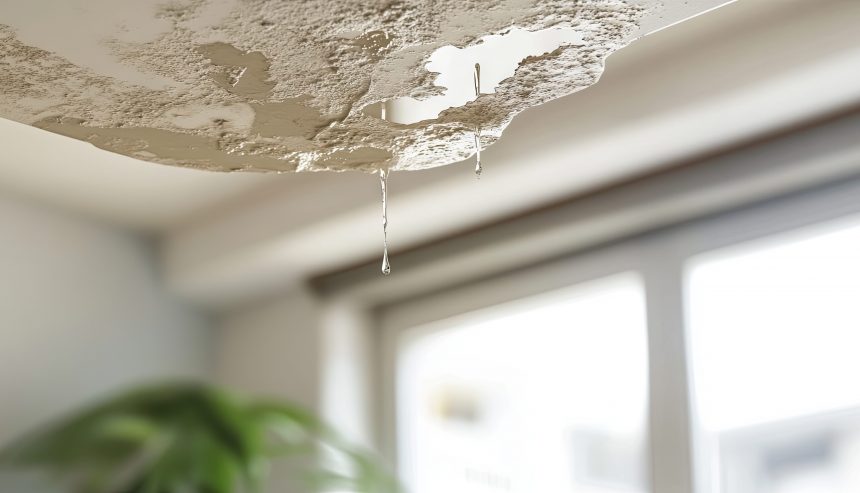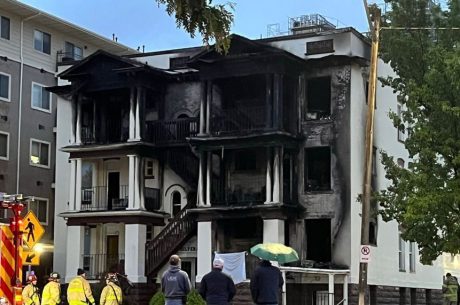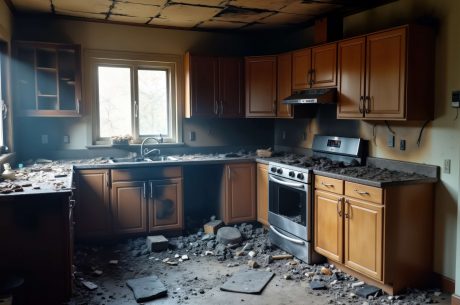Hidden water damage in Salt Lake City is one of the most expensive and frustrating problems homeowners face, mainly because it often goes unnoticed until it’s too late. A slow leak under the sink, moisture behind the walls, or condensation in your HVAC system may seem minor, but over time, these hidden issues can cause serious structural damage, mold growth, and even health problems.
At PuroClean of Layton, we’ve seen firsthand how unseen water damage can quietly destroy homes across Salt Lake County. This guide exposes seven surprising sources of hidden water damage, how to spot them early, and what steps to take before the problem becomes a costly disaster.
Table of Contents
Hidden Water Damage in Salt Lake City: Why It’s a Silent Threat
The reason hidden water damage in Salt Lake City is so common lies in Utah’s climate and construction patterns. The region experiences dry air for much of the year, but when seasonal storms, snowmelt, or plumbing leaks occur, water can linger undetected in walls, floors, or foundations.
According to the Insurance Information Institute (III), water damage accounts for nearly one in every four homeowner insurance claims in the U.S., and the average claim exceeds $12,000. Much of that damage originates from small, hidden sources.
Pro Tip from PuroClean Layton: If you’ve ever noticed a musty smell, bubbling paint, or warped flooring, there’s a good chance water is hiding where you can’t see it.
1. Leaky Plumbing Behind Walls
One of the most common sources of hidden water damage in Salt Lake City is leaky or aging plumbing hidden behind walls or under floors. Small pinhole leaks in copper or PVC pipes can go unnoticed for months, slowly saturating drywall and insulation.
The Environmental Protection Agency (EPA) estimates that household leaks waste nearly 10,000 gallons of water per year, with 10% of homes losing 90 gallons or more daily. These leaks not only inflate your utility bill but also weaken structural materials and encourage mold growth.
Warning signs:
- Peeling paint or warped drywall
- Unexpectedly high water bills
- Musty or damp odors near walls
Prevention: Schedule annual plumbing inspections and replace older pipes made of galvanized steel, which are prone to corrosion.
2. Faulty or Aging Appliances
Appliances are convenient, but they’re also sneaky culprits of hidden water damage in Salt Lake City. Dishwashers, washing machines, and refrigerators with ice makers often develop slow leaks behind or beneath them.
The U.S. Fire Administration (USFA) warns that worn-out hoses or cracked seals in household appliances can lead to unnoticed water leaks that cause floor rot or mold.
Common culprits:
- Rubber hoses on washing machines (should be replaced every 3–5 years)
- Dishwashers leaking at the door seal
- Refrigerators with clogged defrost drains
Pro Tip from PuroClean Layton: Use stainless steel braided hoses for appliances, they’re longer-lasting and less prone to rupture.
3. Roof Leaks and Attic Condensation
A damaged roof may not always drip visibly, but even a small crack can cause hidden water damage that spreads into attic insulation and ceilings. Over time, this trapped moisture leads to wood rot and mold growth.
The National Roofing Contractors Association (NRCA) notes that roof leaks are often caused by deteriorated flashing, cracked shingles, or blocked gutters. During Utah’s fall and winter, when melting snow refreezes into ice dams, water can back up under shingles and seep into the attic.
Warning signs:
- Discoloration on ceilings
- Sagging insulation
- Moldy or musty attic smell
Prevention: Have your roof inspected every fall and keep gutters clean to prevent overflow and ice dam formation.

4. Basement Seepage and Foundation Cracks
Many Utah homeowners experience hidden water damage in Salt Lake City from basement seepage, especially during fall rainstorms and spring snowmelt. Cracks in the foundation or poor yard grading allow water to pool and seep in over time.
According to the Federal Emergency Management Agency (FEMA), just one inch of water can cause $25,000 in property damage. Foundation leaks often go unnoticed until you see efflorescence (white mineral deposits) or a damp smell in your basement.
Prevention:
- Seal cracks with hydraulic cement.
- Ensure your yard slopes away from the foundation.
- Install or maintain a working sump pump.
Local Insight: In Layton and Salt Lake City, clay-heavy soil expands when wet and contracts when dry, this movement increases foundation cracking risk.
5. HVAC and Air Conditioning Systems
Condensation from HVAC systems can also lead to hidden water damage in Salt Lake City homes. Over time, blocked drain lines, frozen coils, or improperly insulated ducts can leak moisture into ceilings or walls.
The Department of Energy (DOE) highlights that HVAC systems should be serviced at least once a year to check for clogs, leaks, or excessive condensation.
Warning signs:
- Water stains on ceilings below vents
- Moldy smell from air ducts
- Dripping or overflowing drain pans
Prevention:
- Have HVAC units professionally cleaned and inspected annually.
- Replace filters regularly to maintain airflow and reduce condensation buildup.
- Make sure condensate drain lines are clear.
6. Leaky Windows and Door Frames
Windows and exterior doors are often overlooked sources of hidden water damage in Salt Lake City homes, especially when sealant deteriorates or caulking fails. During fall storms, rain can leak through small gaps, damaging wall framing and insulation.
The U.S. Department of Energy (DOE) notes that poorly sealed windows not only cause energy loss but also allow moisture intrusion that leads to wood rot and mold.
Warning signs:
- Peeling paint or soft wood near windowsills
- Condensation between double-pane windows
- Discoloration or bubbling paint around frames
Prevention:
- Reseal windows and doors annually with high-quality caulk.
- Replace damaged weatherstripping before winter.
- Install storm windows for added protection.
7. Hidden Leaks from Bathrooms and Tile Floors
Bathrooms are obvious places for moisture, but leaks beneath tile floors, showers, and tubs can be some of the most destructive forms of hidden water damage in Salt Lake City.
The National Association of Home Builders (NAHB) warns that small cracks in grout or aging caulking allow water to seep underneath, rotting subflooring and promoting mold. Over time, water can travel horizontally, damaging adjoining rooms.
Warning signs:
- Loose tiles or hollow-sounding floors
- Soft or discolored baseboards
- Persistent damp smell in bathrooms
Prevention:
- Reseal grout lines and caulk yearly.
- Use water-resistant backer boards during bathroom renovations.
- Install exhaust fans to reduce humidity.
The Hidden Dangers of Ignoring Water Damage
While the visual effects of water damage are concerning, the hidden effects are even worse:
- Mold Growth: The Centers for Disease Control and Prevention (CDC) warns that mold can begin growing within 24–48 hours of moisture exposure, leading to respiratory and allergy issues.
- Structural Deterioration: Prolonged moisture weakens wood and drywall, compromising structural integrity.
- Electrical Hazards: Water can corrode electrical wiring, increasing the risk of shocks and fires.
- Lower Property Value: Homes with water damage or mold history can lose 15–20% of their resale value.
PuroClean Layton Reminder: Early detection is the key to saving thousands in repairs. Regular maintenance and professional inspections are your best defense against hidden water damage.
What to Do If You Suspect Hidden Water Damage
If you suspect hidden water damage in Salt Lake City, don’t wait for visible signs. The longer moisture lingers, the more costly the restoration becomes.
Immediate steps:
- Inspect for moisture: Use a moisture meter or look for discoloration and soft spots on walls or floors.
- Turn off the water supply: If the leak is plumbing-related.
- Document everything: Take photos for insurance claims.
- Call a professional restoration company: Experts like PuroClean of Layton have specialized tools, such as infrared cameras and hygrometers, to detect hidden moisture accurately.
The Institute of Inspection, Cleaning and Restoration Certification (IICRC) recommends starting professional drying within 24–48 hours to prevent secondary damage like mold or structural weakening.
Why Utah Homeowners Trust PuroClean of Layton
When it comes to detecting and repairing hidden water damage in Salt Lake City, homeowners rely on PuroClean of Layton for expertise and compassion.
Here’s why:
- 24/7 Emergency Response: We’re available anytime water damage strikes.
- Advanced Technology: Infrared cameras, moisture sensors, and industrial dehumidifiers ensure complete drying.
- Certified Experts: IICRC-trained technicians handle water, mold, and structural damage restoration.
- Insurance Assistance: We help you navigate claims and documentation.
- Local Knowledge: We understand Utah’s unique weather, soil, and construction challenges.
Whether it’s a small leak or a full basement flood, PuroClean of Layton restores not just your property, but your peace of mind.
Stop Hidden Water Damage Before It Starts
Hidden water damage in Salt Lake City can turn from a minor inconvenience into a major financial burden if ignored. By learning the warning signs and addressing leaks early, you can prevent costly repairs, preserve your home’s value, and protect your family’s health.
If you suspect hidden leaks, moisture, or mold in your home, don’t take chances, trust the professionals who specialize in detection, prevention, and restoration. PuroClean of Layton is your local partner for fast, reliable, and compassionate service.
Don’t ignore the signs of hidden water damage. Call PuroClean of Layton today at (801) 513-2232 or visit our Website to schedule a professional inspection. Protect your Utah home before small leaks become big problems.



